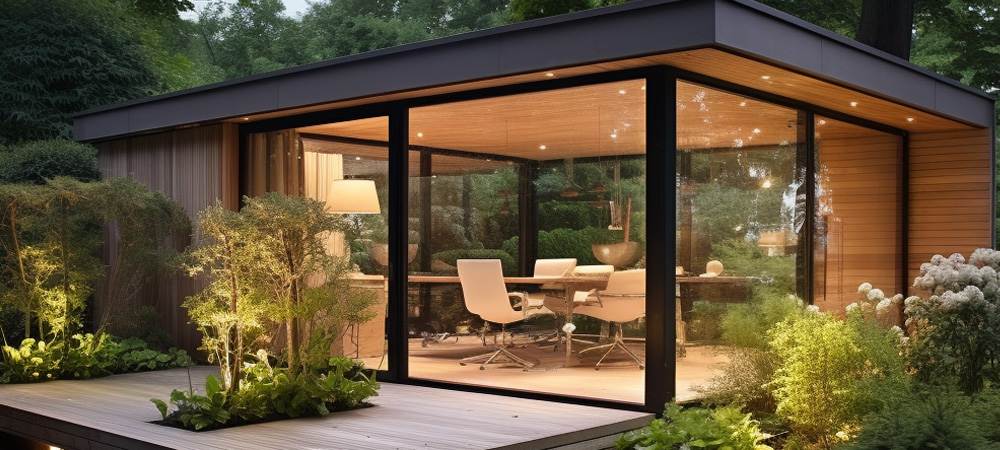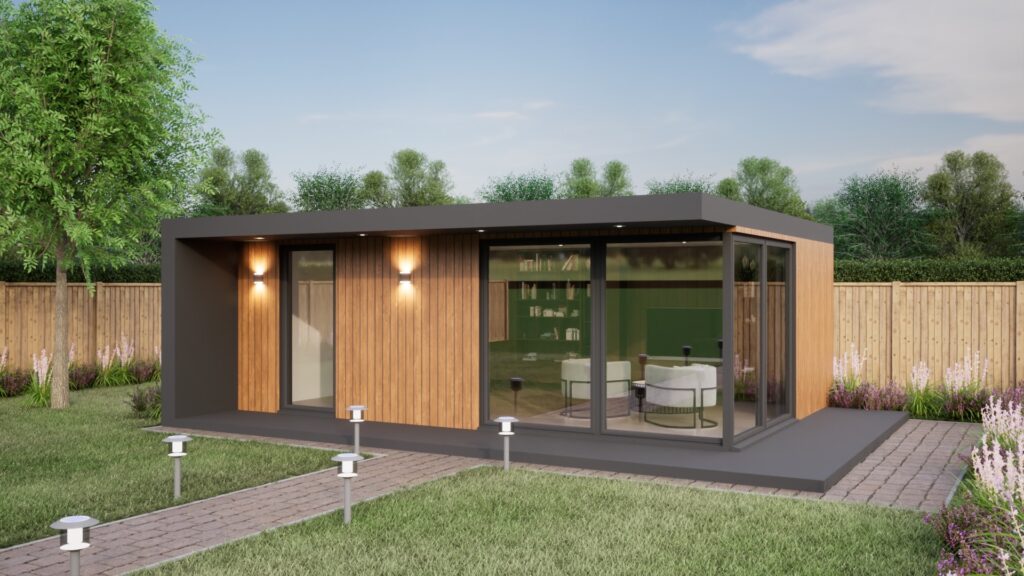Good Ideas On Planning Permission On Garden Buildings
Good Ideas On Planning Permission On Garden Buildings
Blog Article
What Type Of Planning Approval Do You Require To Alter The Usage Of Your Garden Space Or Other Area.?
In the case of building garden rooms, conservatories, outhouses, garden offices or extensions, the concept of "change of use" plays an important role in determining if permission for planning is needed. These are the most important considerations for a planning permit for changing the use of a property change from non-residential to residential use:
If you intend to convert an existing non-residential building (like garages or agricultural building) into a residential space or a garden office, planning permission is typically required. This is due to changing the use type of the building.
Garden Rooms as Living Accommodation:
A room that is used in the garden as an individual living space (e.g. guest house or rental unit) is considered to be a change of usage. In order to ensure that the construction is compliant with all rules and regulations for homes Planning permission is required.
Business Use
You may need planning permission if you intend to use a garden room or conservatory for commercial purposes for example, an office space or location of business that has frequent employees or guests. This is because of the potential impact on the neighboring area including noise, parking and traffic.
Use in Education or the Community:
The transition from a garden area to an educational or community space (such as a conference hall or classroom) requires planning approval. The local authority assesses the area's potential and impact on surrounding areas.
The impact on local infrastructure
Planning permission will be required for any changes in use that have a significant impact on infrastructure in the local area. The decision will be made by the local planning authority in the application process.
Dual Use
In the case of properties with mixed uses (e.g., residential and commercial) A permit to plan is normally needed to clearly define the different uses.
A Boost in Footfall
If the new use is likely to increase traffic or footfall (e.g., converting the garden into a small retail space) Planning permission is required to consider any potential impact on the surrounding zone.
Building Regulations Conformity:
While it's not a strict matter of planning permission, each change in use needs to comply with the building regulations. This will ensure security, health standards, as well as energy efficiency. This is particularly true for conversions of non-habitable spaces into habitable spaces.
Environmental Impact:
Planning permission is required for any changes to the usage that could impact the environmental. One example is converting an agricultural area into a residential space. A environmental assessment could be required in an application.
Community and Amenity Impact
The impacts on local amenities and the nature of the neighborhood is a major consideration. For instance for converting a space in the garden into a café shop, you need approval from the planning department. This is so that it is in line with community plans while also preserving local amenities.
Designated Areas:
In designated areas like conservation zones, National Parks, or Areas of Outstanding Natural Beauty (AONB), changes of use are subject to stricter controls to preserve the character and appearance of the area. This is why planning permission is required.
Local Planning Policies
Local planning authorities often have specific guidelines for changes of use. They can be very different. It is essential to review these policies to understand what changes require permission and the criteria that must be fulfilled.
Planning permission is generally required to make any major changes to the design of a conservatory, garden room, outhouse or garden office. This is to ensure that the proposed use is appropriate for the area, is in line with local and national plans, and is able to address any potential impact on the surrounding environment and the community. Contacting your local planning authority early in the process of planning is crucial to determine the specific requirements and to obtain the necessary approvals. Take a look at the most popular max height of garden building for website info including composite garden rooms, garden outhouse, how to get power to a garden room, garden room heater, garden room, composite garden rooms, garden rooms near me, garden rooms, garden room, garden room planning permission and more.
What Permissions Are Needed For Garden Rooms And Other Structures That Are Related To Neighbourhood Concerns?
When deciding if permits are required for the construction of a garden office, conservatories or gardens along with outhouses or outhouses in the vicinity, it's crucial to consider whether neighbors are concerned. Two important factors to consider: Privacy and Overlooking.
Planning permits are required for any new structure that might result in a loss of privacy because it overlooks adjacent properties. This is so that the building won't negatively alter the living space of those living close to.
Overshadowing and Loss of Light:
A planning permit is usually required if the proposed construction could result in significant light loss or overshadowing to nearby homes. The local planning authority assesses the impact on sunlight to adjacent homes.
Disturbance and Noise
If the garden room or extension is going to be utilized for activities that produce noise (such as an office at home with clients visiting the office, a workshop or a music space) Planning permission is required. It will make sure that noise levels are not too loud and do not disturb neighbors.
Character and Visual Impact
The dimensions, style and style of a brand new building must fit in with the surrounding neighborhood. Planning permits ensure that the project is pleasing to the eye and doesn't affect the beauty of the neighborhood.
Boundary Proximity
The construction of structures within two metres of a boundary or any structure that is higher than 2.5 metres may require approval for planning. This is in order to prevent disputes and impacts on neighboring properties.
Shared Access and Rights of Way
If the construction impacts shared access points or rights of way Planning permission is required to ensure that they are not obstructed or negatively impact.
Objection from neighbors:
Planning applications may be discussed with neighbors. The authority for planning will consider the concerns of neighbors in deciding whether or not permission is granted.
The impact on the value of property:
Although it's not always the main factor, significant changes to the surrounding homes that could affect the value of their properties could affect the necessity of an approval. These impacts will be considered by the local authorities when making their decision.
Covenants and Deed Restrictions:
The property could be subject to covenants or deed limitations which must be abided by, regardless of the permit to build. These legal agreements may define what kind of construction may be allowed and not and could affect the peace of the neighborhood.
Construction Disturbance:
The planning permission may address the concerns of the disruptions that might occur during the construction phase such as noise and dust. You might have to create conditions to benefit your neighbors.
Impact of Infrastructure
If the new structure places additional strain on local infrastructure (e.g. drainage parking, road usage, etc.), planning permission ensures that these effects are evaluated and managed appropriately.
Community Consultation
A more extensive discussion with the community could be needed in certain instances particularly in the case of large or controversial projects. It allows for a democratic decision-making, as it takes the viewpoints of local communities into consideration.
Summary Neighborhood concerns are a major factor in the approval process of conservatories, garden rooms or outhouses. To ensure that the proposed development has no negative impact on the quality of life, privacy, the quality of lighting, noise levels and the overall character of the neighborhood It is essential to verify the plans. Consulting with the local authority for planning and involving neighbors early in the planning process can assist in addressing these issues and facilitate a smoother approval process. See the best heater for garden room for blog tips including herts garden rooms, what is a garden room, garden room heater, herts garden rooms, outhouses for garden, garden out house, costco garden room, costco garden office, garden room permitted development, how to get power to a garden room and more.
What Planning Permits Are Required For Garden Rooms, Etc. In Terms Of Location Restrictions?
Planning permission may be required for garden rooms, conservatories and outhouses. Consider these key criteria when determining the location of your building The distance from boundary
A building that is within 2 meters of the property's boundary cannot be more than 2.5 meters in height. If the building's height exceeds the limit, then planning permission is needed.
The front of the property
Constructions that are built in front of the main elevation of the house (the front side) typically require permission from the planning department, since the permitted development rights do not usually allow forward-facing extensions or structures.
Part of the Property:
Side extensions need to comply with the specific height and dimension limits and usually require planning permission in the event that they extend beyond the current wall of the sidewall.
Rear of the Property:
The size and height of garden extensions and rear rooms at the rear of the property are restricted. Planning permission is required when these extensions exceed the permitted development boundaries.
Designated Zones
In National Parks, World Heritage Sites and Areas of Outstanding Natural Beauty there are stricter rules. Any new construction, regardless of size, may require planning permission.
Historic Buildings
Properties that are listed as a building is subject to strict guidelines. Planning permission and listed-building permits are typically required to construct a new structure or modify an existing one, no matter where it is situated within the property.
Green Belt Land:
The building of green belts is strictly forbidden to preserve open space. A special permit is typically needed for any new construction or major changes.
Flood-prone areas:
In the event that the property is located in an area prone to flooding it is necessary to follow additional regulations to make sure the new construction does not increase the risk. It may be necessary to obtain planning approval or a flood risk assessment.
Urban vs. rural settings
Urban and rural areas have often different regulations. Rural homes may be more accommodating to the dimensions and locations of outbuildings. But this could be different.
Highways & Public Rights of Way
Planning permission is required if the structure is close to public rights-of-way, highways or roads, to ensure that it doesn't obstruct safety, views, or restrict access.
Shared ownership or leasehold of land:
If the property is being rented or part of an ownership sharing scheme, it may require additional permissions. Planning permission could also be required depending on local regulations.
Nearby to other structures
The planning permission must be obtained when the new structure is built adjacent to an existing structure or structure, particularly ones located on adjacent properties. This will ensure that there is no negative effect on the land or buildings nearby.
It is recommended that you consult with your local planning authority for specific guidance tailored to your property's location and specific circumstances. Regulations can vary significantly according to local regulations and the need to ensure compliance with all relevant limitations is vital to avoid legal problems and potential fines. Have a look at the best luxury garden rooms for more advice including garden rooms, garden rooms near me, myouthouse, garden office electrics, ground screws vs concrete, Tring garden rooms, garden rooms near me, costco outbuildings, costco garden rooms, myouthouse and more.